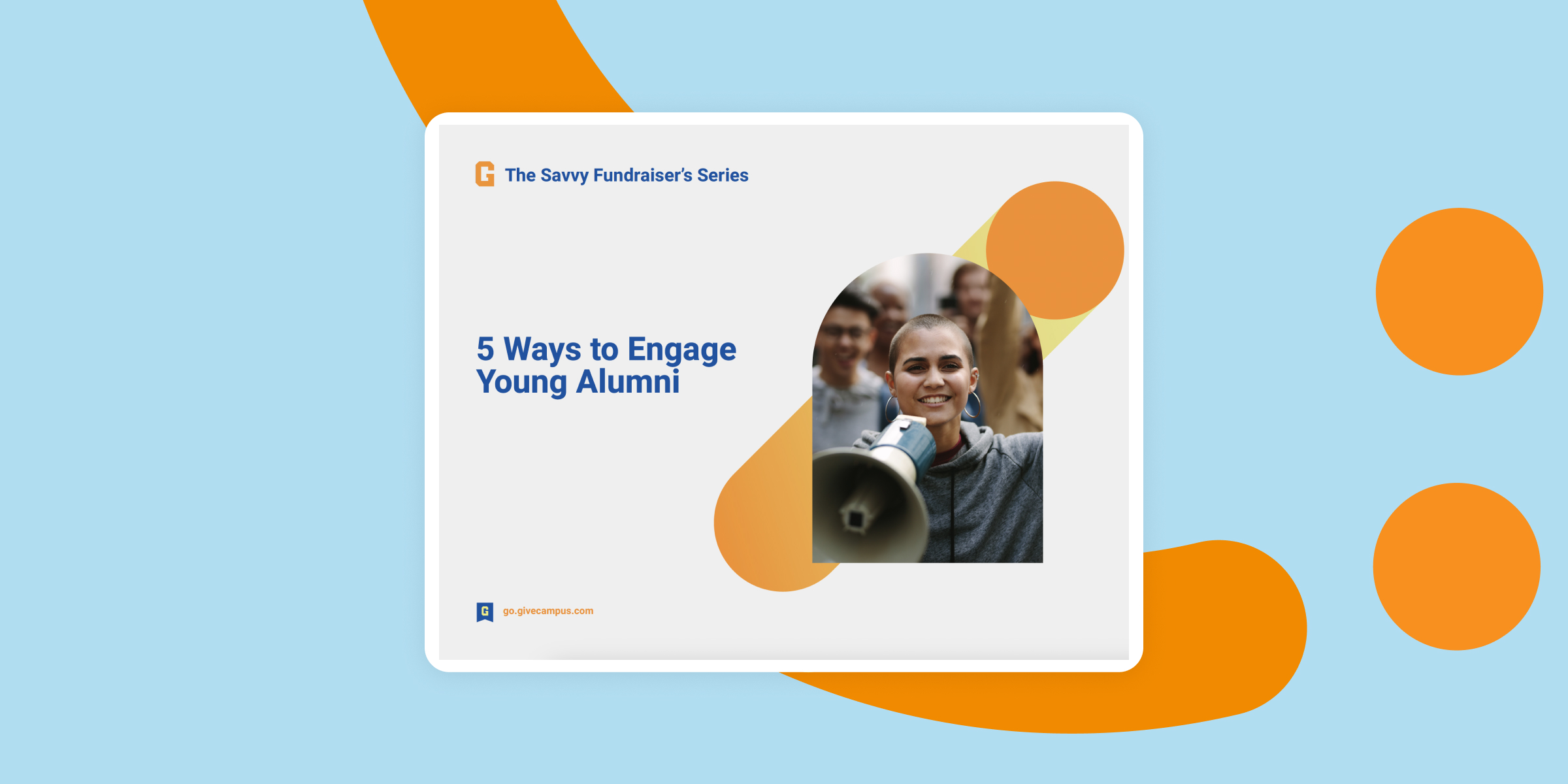Editor’s Note: This post was originally published on September 14, 2023. It has been updated for accuracy and comprehensiveness.
In educational fundraising, understanding your donors is key to building lasting donor relationships and inspiring meaningful gifts. Donor segmentation can help you learn about your different audiences so you can create relevant and personalized communications for them.
When done right, segmentation can boost donor engagement and improve overall retention rates in your giving program. Below, you’ll learn how to segment donors and incorporate segmentation strategies into your fundraising efforts.
What is Donor Segmentation?
Donor segmentation is the process of categorizing your donors into specific segments based on shared characteristics. These attributes may include age, geographic location, financial standing, donor status, affinity group affiliation, and more.
Segmentation is more than just an organizational exercise. It helps ensure your donors receive relevant messaging that resonates and keeps them connected to your institution. Segmentation can be incorporated into all aspects of your donor communications from Giving Day email promos to alumni direct mail to donor stewardship.
What are the Benefits of Donor Segmentation?
While donor segmentation can take more time and resources, the juice is often worth the squeeze.
Here are some of the key ways donor segmentation can help nonprofits and schools:
Donor segmentation improves engagement results for specific groups.
Perhaps you’ve seen a decline in participation from your young alumni. Developing segmented messaging directly for this group provides personalized information that’s written with them in mind. This helps block out other distracting noises that may prevent them from making a gift and lower their engagement levels on your fundraising appeals.
At a recent GiveCampus Partner Conference, Grace Ward, Major Gifts Officer at Davidson College, and Kristin Faivre, the Associate Director of Annual Giving, Marketing, Stewardship, and Operations at Phillips Academy Andover, co-presented a popular session on The Power of Segmented Solicitations. Their presentation inspired this post.
Ward, who has held fundraising roles at Davidson College for more than six years, stressed that “Segmentation can be so powerful for improving ROI for a specific group.”
Donor segmentation ensures a personalized experience for constituents.
Personalization is one of the key ways donor segmentation can be used.
“No donor is the same. We want to make sure that we recognize that and show them we really care about building a personal relationship with them,” said Ward.
Personalization is not only nice to have but is often expected from your donor base. According to a McKinsey report on the value of personalization, over 70 percent of consumers expect personalized experiences. Companies that were able to successfully execute personalization in their marketing saw over 40 percent more revenue.
Fundraisers can benefit from these consumer patterns as well by using donor segmentation to help them achieve more dollars raised and higher rates of retention.
Effective Donor Segmentation Strategies
Whether you’ve already tested donor segmentation at your institution or have just begun considering incorporating it into your nonprofit fundraising strategy, the tips below can help elevate your efforts.
Choose your different segments based on existing donor needs
How do you categorize donors? To segment your donors, you’ll first need access to specific data points about your constituents. Collecting this donor data should be a part of your donor management plan. You may already be automatically collecting this information through your fundraising platform or CRM.
Some examples of the data points to keep track of in your donor database are:
- Name
- Donor Status ( first-time donor, lapsed donor, LYBUNT, SYBUNT)
- Donor Recency
- Demographic Information (age, geographic location, income)
- Affiliations (student, parent, specific majors)
- Donation Amount
- Giving Patterns
Once you’ve organized your donor data, you can create smaller groups of donors based on shared characteristics. When determining your segments, think about existing donor needs and what unique messaging these groups might need.
Perhaps you’ve noticed a dip in engagement among young alumni. Here, age becomes a defining factor, and by tailoring messages to this specific demographic, you can address their specific concerns and values.
In essence, segmentation is about anticipating what each group of donors seeks from their engagement with your institution and tailoring your communication strategy to meet those desires. The result is a more personalized, engaging experience that hopefully compels them to give.
Look to data to balance segmentation with internal resources
Donor segmentation takes additional resources—whether it be time, money, or people. You won’t have the bandwidth to create personalized messaging for every individual donor or even every segment.
“It’s a balancing act, optimizing the results while being respectful for the workload that we’re carrying, yet delivering relevant and timely re-messaging for our donors,” said Faivre.
You’ll want to think about what metrics you are currently using to measure success and how these can be evaluated through the lens of donor segmentation.
For campaigns where you already implemented donor segmentation consider the following: Are there segmented campaigns that had higher rates of donor engagement or saw a larger average gift amount?
If you have yet to try segmenting your donors, think about campaigns that could have benefited from a segmented approach.
What types of donors are already highly engaged in your content? Which donors are not and could benefit from some more personalized outreach?
“The annual giving office is our frontline for our donors’ feedback. We do our best to share those relevant responses with our communication colleagues, along with the results from our email, appeals, and direct mail, even social media ads to shape our results for future communications,” said Faivre.
Create hyper-personalized content for your segments
Once you’ve established which segments to focus on for a campaign, you’ll want to create personalized content for this audience. Consider not just the messaging, but also your audience’s communication preferences. What do historical open rates look like for this segment across various communication channels like email, text messages, phone calls, or social media?
Davidson recently launched a segmented campaign for their young alumni that perfectly encapsulated the tactic of hyper-personalized content. Their team of student engagement ambassadors used GC Video to create personalized videos for every young alum who was being approached for a gift.
“They introduced themselves, they talked about what they were involved in at Davidson, why they were excited to work for The Fund for Davidson,” said Ward. “They also leaned on any similarities they had with the prospective donor. Did they have the same major, improv troupe, etc.”

While not every segmented campaign needs to go to these lengths to create individual content for every donor, this kind of hyper-personalization can help build relationships with new donors and ultimately encourage them to become recurring givers. Not only that, leveraging tools like GC Video is a great way to create volunteer opportunities for students and foster more personalized communications without having to put on an in-person event.
Simplifying Donor Segmentation with GiveCampus
Donor segmentation can help improve your campaign success and ultimately could lead to greater donor retention. But, segmenting your messaging and campaigns takes additional time and resources.
Luckily, platforms like GiveCampus can help streamline the segmentation process and amplify the impact of segmented messages in your email marketing campaigns. Our free AI-powered utility—Donor Outreach AI can help you kick off your segmentation strategy today. In just moments, you can generate targeted donor emails, invites, and more.
When it comes to applying segmentation to your Giving Days, GC Social Fundraising enables fundraisers to create tiered crowdfunding campaigns that have segmented campaign pages for different affiliations and audiences.
See How Hathaway Brown saw 47% growth on their Giving Day using Tiered Campaigns
GC Volunteer Management helps streamline processes for your advocates and student ambassadors, so they can help with personalized messaging for a greater number of donor segments.
These are just some of the ways GiveCampus helps schools implement segmentation strategies. If you want to learn more about how the GiveCampus platform could help with donor segmentation, speak with a fundraising expert.





